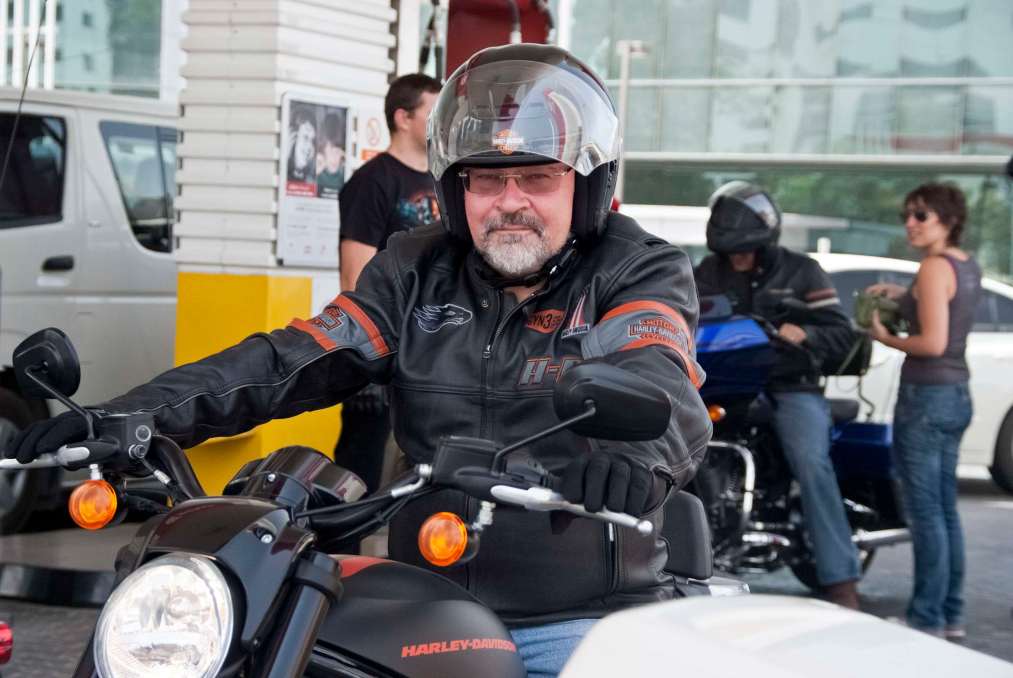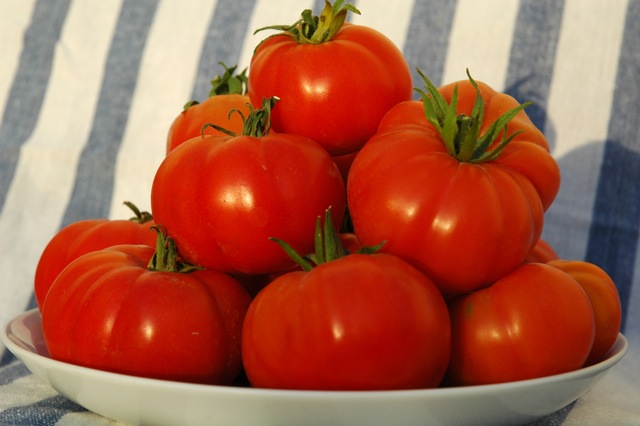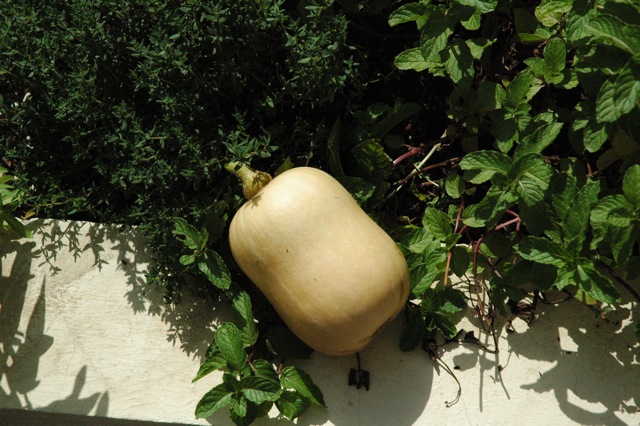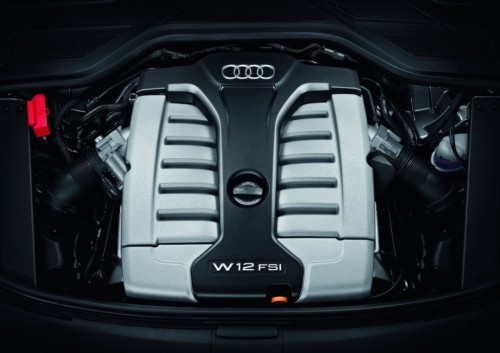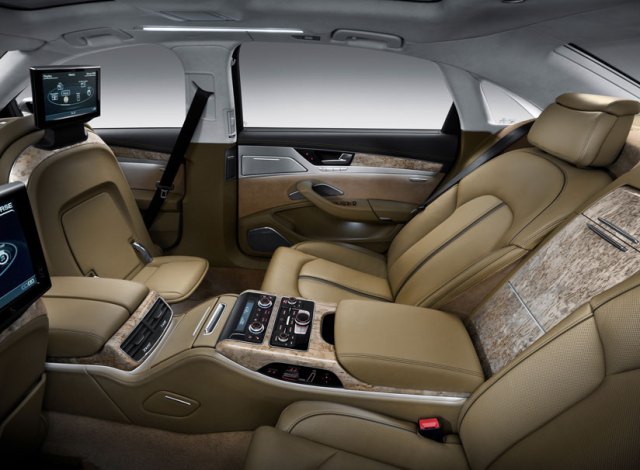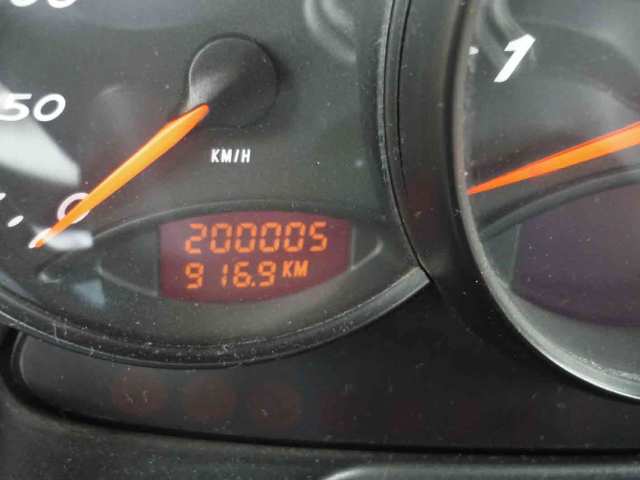Thunder In The Night
To celebrate the 10th year of its production, Harley Davidson have launched a new Night Rod Special. alpha went for a ride.
Launched in 2002, the original V-Rod heralded a new era for Harley-Davidson, and a bold attempt to broaden its product range away from the iconic air-cooled V-twin engines. The V-Rod was an uncompromisingly modern machine, with an engine designed by Porsche, no less, and with little concession to tradition. Its 1130cc 60-degree Revolution® V-Twin engine was the first Harley-Davidson production engine equipped with overhead cam shafts and liquid cooling, and came with a high 9000-rpm redline.
Fast forward 10 years, and feast your eyes on the 2012 Night Rod Special. Like all 2012 V-Rod models, it is powered by the latest version of the Revolution engine, now taken out to 1250cc, liquid-cooled and with dual overhead camshafts, four-valve cylinder heads and Electronic Sequential Port Fuel Injection (ESPFI). Helping you get that power down on the road is an ‘Assist and Slip’ clutch, five-speed gearbox and a high-performance carbon-fiber drive belt. Tyres are Michelin Scorcher radials, including a massive 240mm wide rear. Brakes are Brembos, with anti-lock braking system (ABS) fitted as standard. There’s even a Smart Security System which means you can leave the key fob in your pocket.
New for 2012, Harley have given the Night Rod Special a new tapered tail section, lighter wheels, and improved ergonomics which mean less of a stretch to both the rider footpegs and handlebars. Inverted front forks and retuned rear suspension enhance ride and handling.
One thing you can never ignore is the length of the V-Rod’s wheelbase. The bike is 2.44 metres long, and the front forks are kicked out a long way forward for improved straight line stability. This has an interesting effect in the bends – coupled with that massive rear tyre, the whole bike seems to pivot, not from the tyre contact patch at the bottom of the wheels, but from an imaginary pole through the steering head and saddle. It takes some getting used to, but when you do, given a degree of commitment, the V-Rod will corner as hard as you dare to push it. It’s not a European sports bike, for sure, but just like their car-making counterparts, America seems to have discovered corners.
Partly this is due to the stretched forward riding position. For me, the controls were still quite a reach and took a while to become familiar, but again, there’s no question about their effectiveness when you want to pull out and pass someone. There’s instant grunt all the time from that potent engine, and it is only the pressure of the wind on your chest that reminds you just exactly how much poke this thing has got. Not much will stay with it in a straight line, that’s for sure.
What Harley Davidson have never lost sight of is the very direct and mechanical nature of the experience. Despite the fact that the engine is rubber mounted, and the use of a high-tech drive belt, you can feel every single beat of the engine through the handlebars, seat and footpegs. The tiny little nacelle over the headlight is there for mainly decorative purposes, so you feel the full force of the wind in your face.
The 72-degree angle of the V retains Harley’s trademarked rumble, and the twin exhausts mask nothing of the punch of the engine. Riding the V-Rod is a visceral, intense onslaught to all your senses, one long continuous explosion of noise and vibration punctuated with the heat of the sun and the smell of the desert. It is thrilling and totally absorbing, and the world shrinks around you as more and more of the trivialities and worries are stripped away, fluttering in your wake like discarded tissues. Eventually, nothing exists but you, the bike and the road. The noises in your head are drowned out by the noises around you, your mind empities in order to concentrate completely on the here and now. All that matters is the next mile, the next bend, the next hour.
Of course, it is also a relief to stop and catch your breath. Some of the bikes we are riding with have fashionable peanut tanks, but they only hold enough fuel for a hundred kilometres or so, and stopping is a regular necessity, a chance to take your head out of the goldfish bowl and to work some blood back into your vibrating white fingers. God, I had forgotten how intense motorcycling can be.
But that is the attraction. Few enough people ever experience the rawness and intensity of a long ride, and fewer still do so in company. It is the camaraderie of shared experience that bonds all motorcyclists, and it was a privilege for me to represent alpha in such company. The V-Rod is very far from being a traditional Harley Davidson, but it has all the qualities, power and performance to fully justify its position as a modern version of the marque.
Time, cars, mortgages and responsibilities may well change your priorities in life, but this remains true. Once you become a biker, you are a biker for life. No matter how long it is since you last went for a ride, you never forget. Never.
Harley Davidson V-Rod Night Rod Special
- Rubber-mounted, liquid-cooled, 1250 cc Revolution® engine with Electronic Sequential Port Fuel Injection (ESPFI); 125 hp @ 8,250 RPM; 82 ft. lbs.(111 Nm) @ 7,250 rpm.
- Straight-shot factory exhaust with brushed finish dual mufflers; black end caps and exhaust shield.
- Black, split five-spoke cast aluminum wheels are 1.4 kg lighter than previous wheels.
- Tapered tail section with flush-mount LED tail light.
- Pullback handlebar places controls three inches (7.62cm) closer to the rider.
- Reduced reach, forward-mounted rider footpegs.
- Inverted front forks.
- Two-up seat with custom stitching.
- Stylised black speed screen visor.
- Unique graphics, including V-Rod 10th anniversary emblem.
- Black powder-coated engine with black covers.
- Blacked-out frame, handlebar, front fork, triple clamps and covers.
- Racing stripe on airbox and tail section.
- Sport front fender with painted brace supports.
- 240 mm wide rear tyre.


